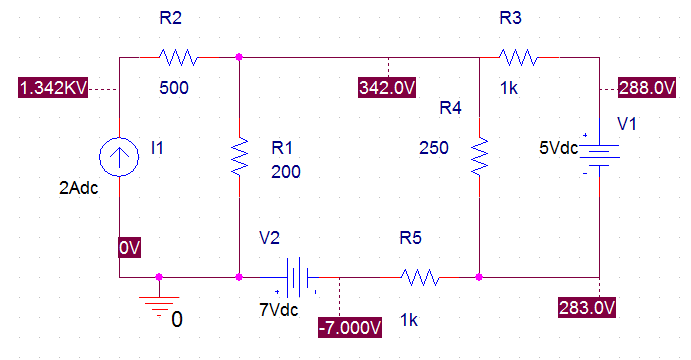How do I use Superposition Theorem for Linear Circuits?
Sometimes you're faced with a problem that has multiple power supplies. They may be alternating current, and they might be direct current. Either way, it doesn't particularly matter. One of the tools in your tool belt is the Superposition Theorem, and you shall know no fear.
The superposition theorem is pretty easy. The basic idea is that you will look at each power supply at a time and perform all calculations assuming only one active power supply. You then sum up the individual parameters for whatever you're looking to figure out.
Think of it this way:
You have three voltage sources and want to calculate the total voltage across a resistor.
All you do is pretend that all but one voltage source doesn't exist and calculate the resistor's voltage. You then move on to the next voltage source. Once you've calculated the voltage across the resistor from all three voltage sources, add the resistor voltages together to get your final answer.
That's superposition in its most simple form.

Now things get more complicated when you get circuits like those above.
The more precise way to solve the problem is by treating voltage sources as short circuits and current sources as open circuits.
In the above circuit, the 500-ohm resistor would not be used as it is part of an open circuit path. Though a DC circuit was shown, AC circuits are equally capable of being solved through superposition using the same process.
Sorry that this post isn't longer, but that's all you have to know to use the superposition theorem... not to be confused with the superposition principle from physics, which covers such things as additive electric and magnetic field strengths.




Member discussion